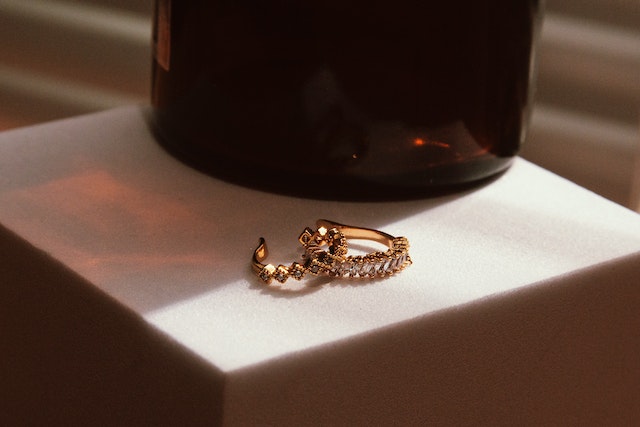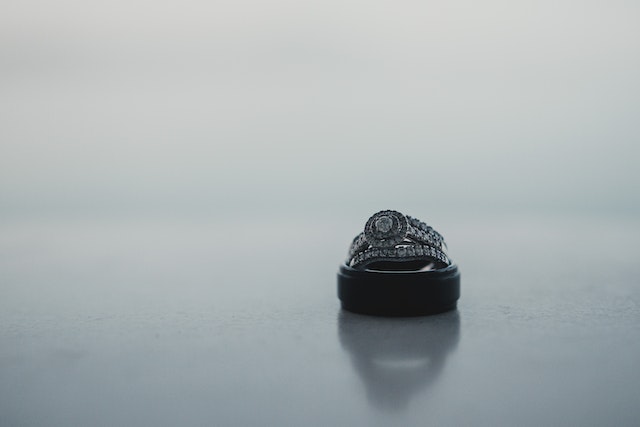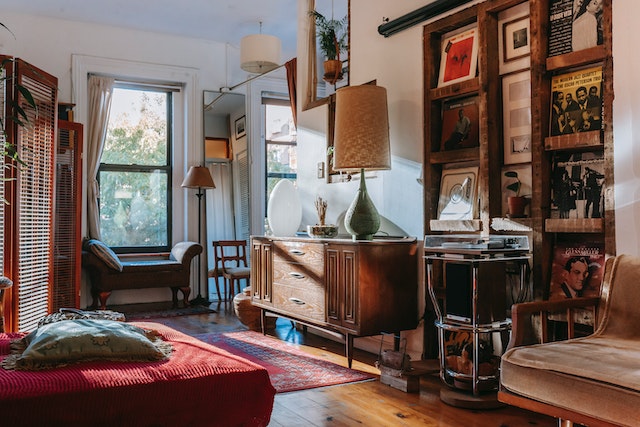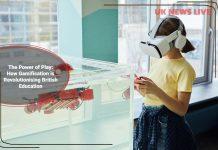No matter their material worth, the items handed down from one generation to another often become precious to us.
Whether it’s a diamond ring worn by a sparkly-eyed great grandmother; furniture with a century’s worth of scuffs; or faded photographs from a world no one is alive to remember; these heirlooms connect us to our past and act as mementoes to the emotional bonds of family.
It is only natural that people want to be the best custodians they can to these family treasures and ensure they can be enjoyed for generations to come.
But how should we store family heirlooms – and what is an heirloom in the first place?
What kind of items become Heirlooms?
 The term “heirloom” originated as a principle in English law, where items were annexed by inheritance to a family estate. For those lucky enough to live in grand houses and country estates, protecting their family heirlooms and adding to this collection of treasures (either through the purchase of fine goods or the commissioning of artworks) was part of a person’s duty.
The term “heirloom” originated as a principle in English law, where items were annexed by inheritance to a family estate. For those lucky enough to live in grand houses and country estates, protecting their family heirlooms and adding to this collection of treasures (either through the purchase of fine goods or the commissioning of artworks) was part of a person’s duty.
In fact, the loss of such items was often a great source of shame – with the idea of “selling the family silver” becoming an idiom for cashing in one’s heirlooms for short-term or selfish gain.
As time has gone on, the definition of “heirloom” has broadened to anything passed down within a family. All manner of things can become family heirlooms: some have monetary value, while others have great sentimental worth. In many cases, family heirlooms have both, making them treasures in both the figurative and literal sense.
Traditionally, the things we passed down to our descendants were valuable in some way and became part of a person’s inheritance. In the days before mass production, functional items such as timepieces, glassware, tea sets, crockery and furniture were all objects that few could afford to give up lightly and would be passed down while they were still useful – often growing in sentimental value as time went on. Other objects and keepsakes that tend to become family heirlooms include important personal items, particularly special pieces of jewellery, such as a grandmother’s engagement ring.
There are some heirlooms however which may feel more mundane, but to the family in question are suffused with feelings and memories. This might be a rolling pin from a baking great-great-grandfather, a book of family recipes amended over generations, letters written home during World War I, or video footage from the 1950s. Here, the value is cultural and personal as much as it is monetary.
Storing Family Heirlooms safely
 The decisions we make to keep family heirlooms safe and secure depend both on the items in question and our individual preferences. For example, someone may enjoy the idea of sitting around the same big mahogany table for dinner that their Regency ancestors did and see the inevitable dings that come with daily use as part of that item’s rich history. Other pieces may act as an anchor to the past and give us a tangible sense of the love and care of relatives who passed and are therefore always kept close by.
The decisions we make to keep family heirlooms safe and secure depend both on the items in question and our individual preferences. For example, someone may enjoy the idea of sitting around the same big mahogany table for dinner that their Regency ancestors did and see the inevitable dings that come with daily use as part of that item’s rich history. Other pieces may act as an anchor to the past and give us a tangible sense of the love and care of relatives who passed and are therefore always kept close by.
On the other hand, there are circumstances in which we may want to preserve family treasures as perfectly as possible. Many of us feel more comfortable keeping extremely valuable items (e.g., antique jewellery) stored safely away, especially when we want to pass these objects on to future generations.
It is also often the case that we simply do not have the room in our own homes to keep everything handed down to us. When elder generations pass away, children can be left with beautiful items that they do not have the space for, yet still, wish to keep hold of. If a house lacks storage space, people may feel uneasy keeping an item such as a delicate vase around – especially if they have young children or lively pets.
Preserving precious Pieces for Future Generations
 When it comes to how we keep and interact with family heirlooms, there are three main options on offer to us:
When it comes to how we keep and interact with family heirlooms, there are three main options on offer to us:
- Use or wear the item or keep it on display in our home.
- Store the item in our home so it is easy to access, but not in danger of being damaged, lost or broken through daily use.
- Store the item outside of our home for added security and peace of mind.
In the first case, simply being mindful and taking the best care of the heirloom we can is the most protection we can offer (alongside ensuring that all valuable pieces are insured). Storing items more carefully at home – for example in a locked cabinet or spare room – is often a safer option for particularly valuable or delicate pieces.
The third option is to use professional storage services. This can be the ideal solution for people who have been charged with the care of heirlooms that are either extremely fragile or extremely precious and where the home doesn’t offer enough protection or security. Professional storage is also a way for people to gain peace of mind, lessening some of the responsibility that comes with owning a family heirloom, as they know it is safely under lock and key.
Expert Tips for looking after different Types of Family Heirlooms
As mentioned above, the charm of some family heirlooms is that they are used and look used – like a rickety bookshelf your great-grandfather made, or a family almanack that is continually leafed through and updated. Some items, however, need greater care than others.
Paper Heirlooms
 Paper is a particularly vulnerable form of heirloom and can be affected by light, heat, moisture, and exposure to insect life. It can be heartbreaking to store old photos, documents, or keepsakes away in the house, only to find they have crumbled or faded when we go to look at them.
Paper is a particularly vulnerable form of heirloom and can be affected by light, heat, moisture, and exposure to insect life. It can be heartbreaking to store old photos, documents, or keepsakes away in the house, only to find they have crumbled or faded when we go to look at them.
To preserve paper items as perfectly as possible, they need to be kept in a controlled environment, free from insects, mildew, and dampness. They can be placed into acid-free envelopes or file folders, using storage boxes big enough for the originals to lay flat or upright without folding or bending. They should also be kept in a cool area in the main house – or stored professionally outside of the home – rather than in hot attics or humid garages and basements.
If you would like your heirloom photos or documents to be used or on display, make sure they are kept out of direct sunlight, and make copies of everything so nothing can be irretrievably lost. A professional framer can help you to display these items properly, using UV-resistant glass to limit the effects of ambient light.
Heirloom Jewellery
 Heirloom jewellery tends to be more resilient than paper items, but it still needs some careful looking after. The most important thing to bear in mind is not to attempt to clean heirloom jewellery yourself. Jewellery can be surprisingly easy to damage even when we are trying our best to be cautious, and the chemicals we choose to clean it may be inappropriate. If jewellery needs to be cleaned, it is best to take it to a trusted jeweller and pay for a professional service.
Heirloom jewellery tends to be more resilient than paper items, but it still needs some careful looking after. The most important thing to bear in mind is not to attempt to clean heirloom jewellery yourself. Jewellery can be surprisingly easy to damage even when we are trying our best to be cautious, and the chemicals we choose to clean it may be inappropriate. If jewellery needs to be cleaned, it is best to take it to a trusted jeweller and pay for a professional service.
To avoid silver pieces from tarnishing in the first place, keep them in silver cloth bags, and store diamonds away from other jewellery to avoid scratching. Wrap softer pieces and stones in archival tissue, and make sure that the boxes heirloom jewellery is kept in are acid-free. It is also important to ensure jewellery such as necklaces are stored flat, and that they are kept in a clean, dry space.
Heirloom Furniture
 Furniture of the past was built to last, and there is no reason why these heirlooms can’t continue to be passed down if they are properly cared for. To avoid cracking and warping, it is always advised to keep antique furniture at least two feet away from radiators. Antique furniture also fares best when there is little moisture in the air, although not enough to cause dampness – a balance that can be achieved with a humidifier.
Furniture of the past was built to last, and there is no reason why these heirlooms can’t continue to be passed down if they are properly cared for. To avoid cracking and warping, it is always advised to keep antique furniture at least two feet away from radiators. Antique furniture also fares best when there is little moisture in the air, although not enough to cause dampness – a balance that can be achieved with a humidifier.
As pollutants and dust can cause damage, it is also important to keep antique furniture clean, though without being overzealous. Use a dry, soft cloth to dust the piece, but avoid vinegar or modern antibacterial sprays and wipes, as these can damage the surface. In order to keep wooden furniture looking beautiful, polish it twice a year with beeswax (which you can find in most DIY shops), but avoid household or spray polishes.
Whether you own a glittering piece of jewellery from a time long past or drink your coffee from a Victorian side table, some forethought and care is all you need to keep your heirlooms in wonderful condition – and preserve your personal family history for generations to come
This article is brought to you by the team at St James’ Safe Deposit, whose purpose-built underground vaults provide safe deposit in Manchester and Leeds of luxury items, important documents, and valuables.


































